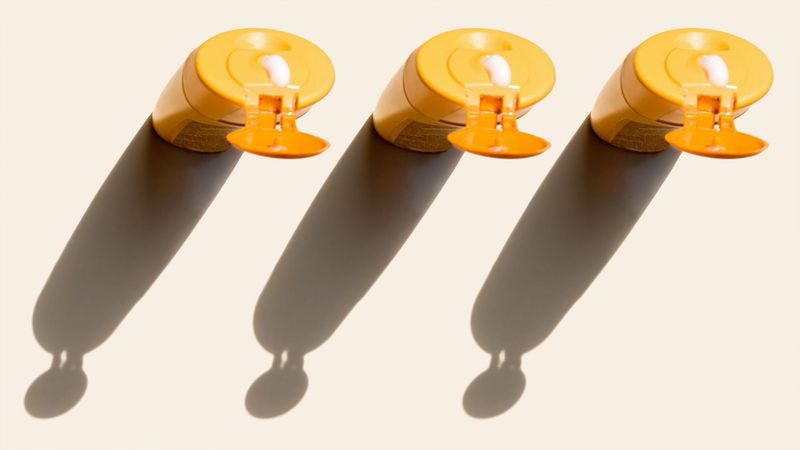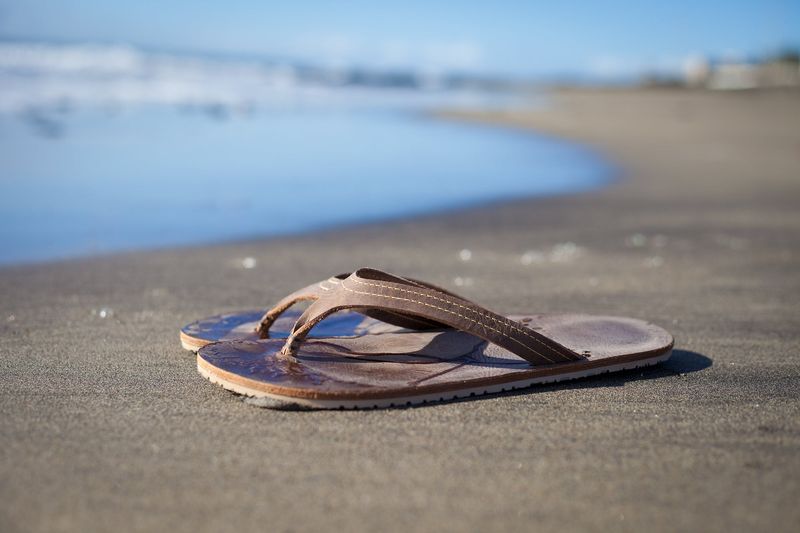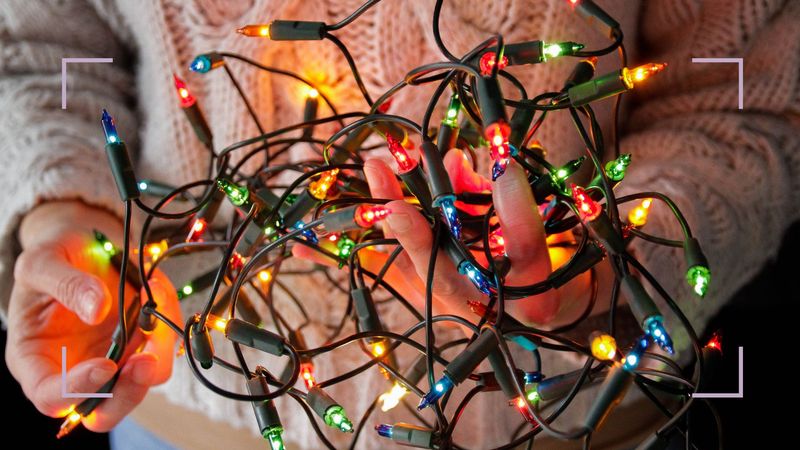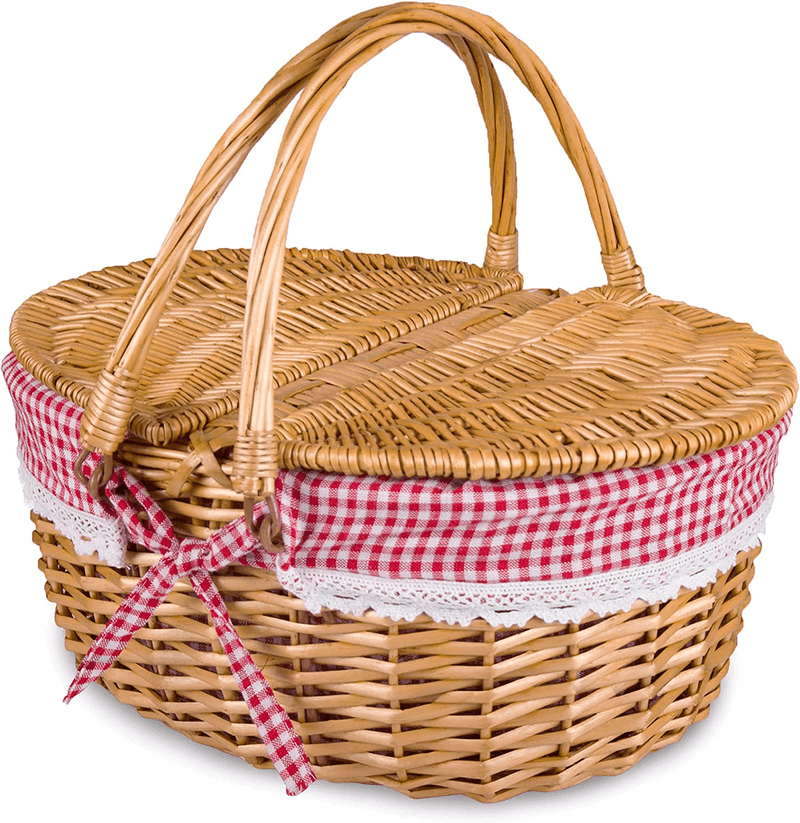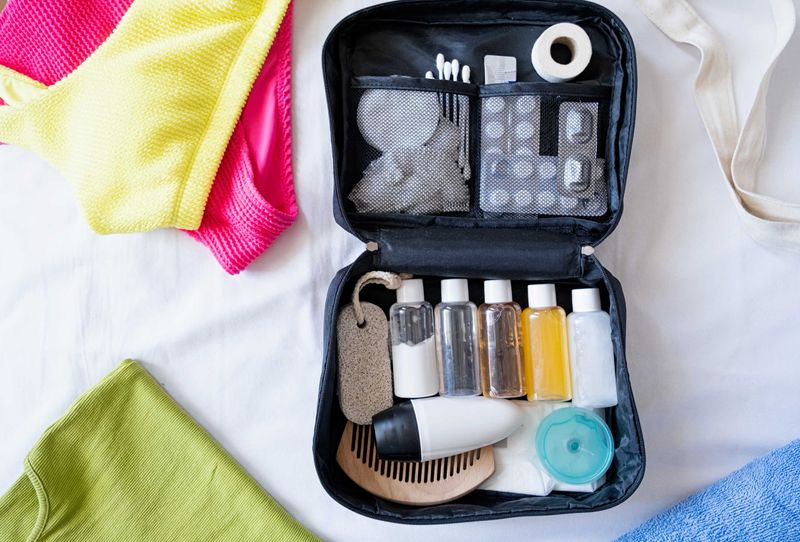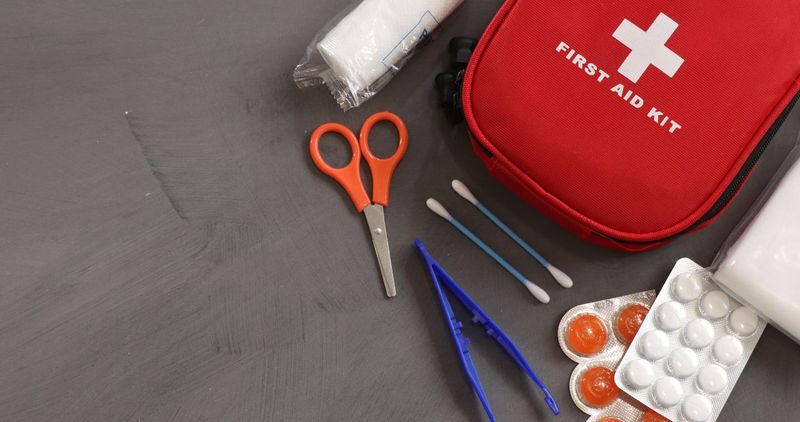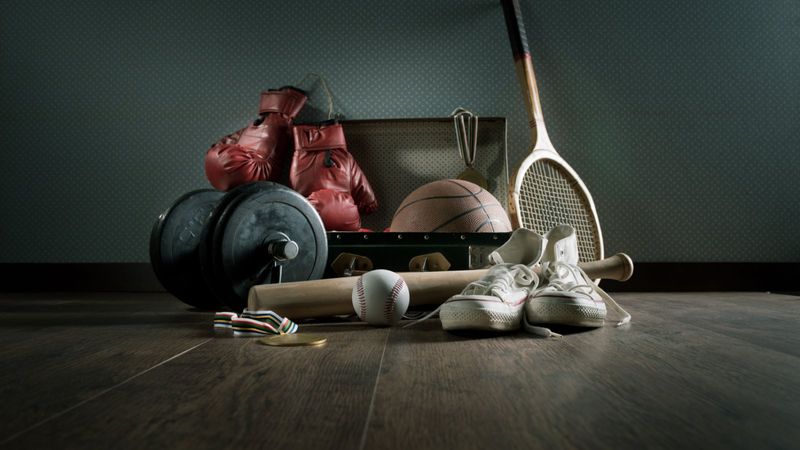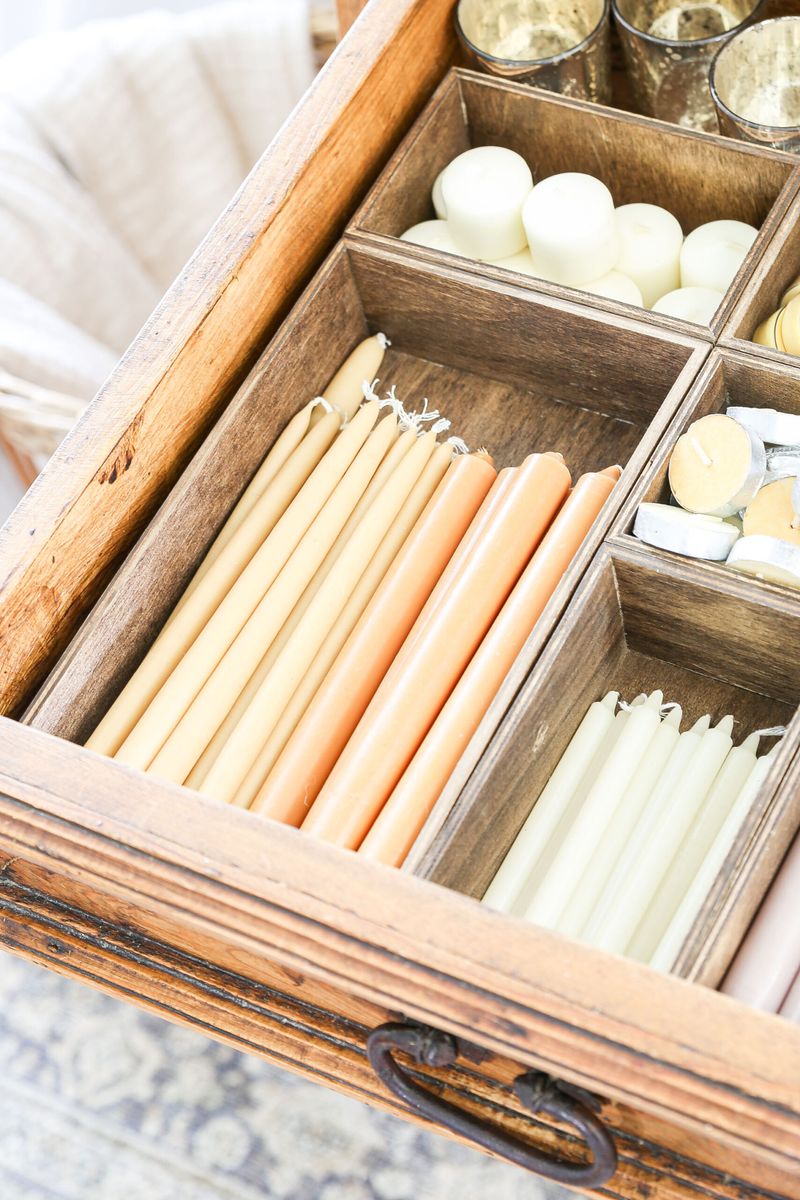As temperatures climb and summer activities kick into high gear, professional organizers recommend a thorough decluttering session before the hottest days arrive.
June 2025 offers the perfect opportunity to lighten your load before mercury levels soar.
Getting rid of these seasonal items not only creates more space in your home but also ensures you’re prepared for comfortable, stress-free summer living.
1. Expired Sunscreen Bottles
Rummaging through bathroom cabinets often reveals a graveyard of half-empty sunscreen bottles from summers past. Most sunscreens lose effectiveness after 1-3 years, potentially leaving your skin vulnerable to harmful UV rays.
Check expiration dates and toss anything outdated. Remember that bottles exposed to high temperatures degrade even faster, making that forgotten tube in your beach bag particularly suspect.
2. Flip-Flops Past Their Prime
You know those flip-flops with the paper-thin soles and stretched-out straps that barely stay on your feet? Time to bid them farewell! Worn-out summer footwear not only looks shabby but can actually cause foot pain and posture problems.
Experts recommend replacing flip-flops annually if you wear them regularly. Take a moment to assess your collection – if the footbed shows a deep impression of your foot or the straps are loosening, it’s definitely time for an upgrade.
3. Neglected Grilling Tools
While firing up the grill sounds appealing, those rusty, crusty grilling tools lurking in your garage deserve a critical eye. Warped spatulas, frayed brushes, and tongs that no longer close properly compromise both safety and your culinary results.
Many households accumulate duplicate grilling tools over the years. Take inventory of what you actually use and consider donating extras in good condition. Quality matters more than quantity when it comes to achieving those perfect grill marks on your summer feasts.
4. Tangled Holiday Light Strands
Why are you still harboring that jumbled nest of outdoor string lights from last December? Mysteriously, these tangled messes seem to migrate between storage spaces year-round, taking up valuable room when you need it most.
June offers the perfect opportunity to test each strand before storing properly or discarding. For lights that still work, invest fifteen minutes to wind them properly around cardboard or specialized reels. Your future self will thank you when holiday decorating time returns.
5. Sun-Faded Outdoor Cushions
After seasons of sun exposure, those once-vibrant patio cushions now tell a sad, faded tale. Beyond their compromised appearance, deteriorating outdoor fabrics often harbor mildew and provide inadequate comfort.
Perform the squeeze test – if cushions no longer spring back to shape or feel lumpy, it’s replacement time. Many retailers offer mid-season sales on outdoor furnishings, making June an ideal month to refresh your outdoor living space before hosting summer gatherings.
6. Deflated Pool Toys
Ah, the sad graveyard of punctured inflatables that accumulates in garages nationwide! Those leaky floats and partially deflated beach balls aren’t magically repairing themselves.
Conduct a quick inflation test on each item. Patch kits can save quality items with minor punctures, but be realistic about what’s truly salvageable. Remember that cracked plastic and deteriorated seams usually indicate the end of a pool toy’s useful life – recycle what you can and start fresh.
7. Mismatched Food Storage Containers
Summer potlucks and picnics demand reliable food storage, yet many kitchens harbor chaotic collections of containers without matching lids. Why continue this frustrating treasure hunt every time you need to store leftovers?
Empty your entire container cabinet and play matchmaker. Orphaned pieces should be recycled or repurposed. Consider investing in a uniform set with color-coded lids to eliminate future frustration and make summer meal prep more efficient.
8. Expired Pantry Ingredients
Remember that special seasoning blend you bought for last summer’s barbecue? Chances are it’s lost potency by now, along with other rarely-used specialty ingredients hiding in your pantry.
June offers the perfect timing to inspect expiration dates before summer entertaining begins. Spices typically maintain peak flavor for only 1-2 years. Don’t let outdated ingredients compromise your culinary creations.
9. Unused Picnic Supplies
Every household seems to accumulate peculiar single-purpose picnic gadgets – from corn-on-the-cob holders to specialized watermelon slicers that see daylight once annually, if ever. These unitaskers consume precious storage space year-round.
Be brutally honest about which items actually enhance your outdoor dining experience. Many specialized tools can be replaced by versatile kitchen implements you already own. Streamlining your picnic kit now ensures you’ll grab only what you truly need for spontaneous summer outings.
10. Worn-Out Summer Hats
Your collection of sun hats might include some specimens well past their prime – think sweat-stained brims, crushed crowns, and frayed edges. Beyond looking shabby, deteriorated hats often provide inadequate sun protection.
Examine each hat for structural integrity and cleanliness. Those beyond salvation should be composted (if natural materials) or discarded. Quality sun protection never goes out of style, making this a worthy investment before temperatures soar.
11. Travel-Size Toiletry Stockpile
Mysteriously multiplying hotel shampoos and half-empty travel tubes often overflow bathroom drawers. Many of these miniature products have likely expired or dried out since your last vacation.
Check seals and product consistency before deciding what stays. Consider donating unopened, current items to homeless shelters where travel sizes are particularly valuable. For future trips, reusable travel containers filled with your preferred products are more economical and environmentally friendly.
12. Excessive Water Bottle Collection
How many water bottles does one household actually need? If your cupboards are bursting with promotional freebies, mismatched lids, and bottles you never use, it’s time for a hydration station intervention.
Keep only your favorites that don’t leak and actually get used. Check for unpleasant odors that won’t wash out and stained interiors that have seen better days. Many schools and sports programs welcome donations of clean, functional water bottles.
13. Outdated First Aid Supplies
Summer adventures often lead to minor scrapes and burns, making functional first aid supplies essential. Yet many households maintain kits with adhesive bandages that no longer stick and antibiotic ointments past their prime.
Most first aid items have expiration dates worth respecting. Medications, especially liquid forms, can degrade and become less effective over time. June offers the perfect opportunity to refresh these crucial supplies before summer activities increase the likelihood of minor injuries.
14. Empty Plant Containers
Gardening enthusiasts know the struggle – that growing collection of empty pots taking up valuable shed or garage space “just in case” future planting inspiration strikes. Reality check: how many containers do you actually use each season?
Keep only pots in good condition that you genuinely plan to use this season. Cracked plastic containers can leach chemicals into soil and compromise plant health. Consider donating excess pots to community gardens or schools where they’ll fulfill their plant-holding destiny.
15. Abandoned Sports Equipment
From that badminton set missing half its birdies to the volleyball with perpetual deflation issues, sporting goods often linger long after their playable days have ended. These items consume valuable storage space while delivering minimal recreational value.
Test each item for functionality and completeness. Equipment in good condition that simply doesn’t get used can find new life through donation. Remember that damaged equipment can actually hinder proper skill development, especially for children just learning new sports.
16. Half-Used Seasonal Candles
Those partially burned summer-scented candles from seasons past have likely gathered dust and lost fragrance potency. Candles exposed to temperature fluctuations in storage often develop unsightly cracks and color changes.
Perform the sniff test – if the scent has faded or changed, it’s time to say goodbye. Consider repurposing the containers of quality candles after removing remaining wax. Fresh seasonal scents can transform your living space more effectively than these lingering half-used veterans.


